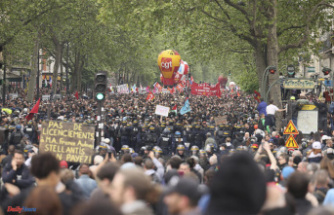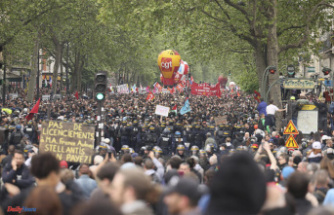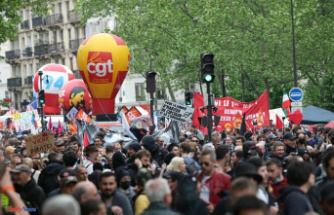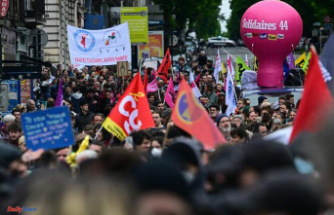In order to get inflation under control, the US Federal Reserve has been raising interest rates for months. In October, the inflation rate fell to 7.7 percent - more than many experts expected. They now expect the Fed to make smaller rate hikes.
High inflation in the US eased more than expected in October. Compared to the same month last year, consumer prices rose by 7.7 percent, as announced by the Department of Labor in Washington. On average, analysts had only expected a decline to 7.9 percent. In the previous month, the inflation rate was 8.2 percent. It is the fourth decline in a row. The data caused price fireworks on the stock exchanges. Investors are now expecting the Fed to make the next rate hike much smaller than previously thought.
Core inflation, excluding volatile energy and food prices, fell to 6.3 percent from 6.6 percent. Here, too, the decline was stronger than expected. The US dollar fell across the board after the numbers. US Treasury yields also came under pressure. Because the somewhat weakened upward pressure on prices points to fewer interest rate hikes by the US Federal Reserve in the future.
For the economists at Commerzbank, "there are increasing signs that inflation has passed its peak and is falling again". They now expect a rate hike of 50 basis points and then even smaller steps.
Helaba points to what it considers to be core inflation that is still too high. This suggests a broad-based upward trend in prices. "Therefore, there should be no doubt that the interest rate screw will continue to be tightened," it said in a first reaction. But even for the likelihood that there will be a smaller rate hike in December is increasing.
Hauck Aufhaeuser Lape Privatbank expects the US Federal Reserve to "take a less harsh stance and slow its pace of interest rate hikes in December" if inflation falls further. "The key interest rate peak should be reached in spring 2023."
The Federal Reserve has been raising interest rates in unusually large increments for months to keep inflation in check. Most recently, she increased it again by three-quarters of a percentage point. It is currently in a range of 3.75 to 4.00 percent. The Fed is poised to step up but has signaled that it may soon slow down some of the pace of the tightening moves. US currency watchdog Neel Kashkari, however, called it "completely premature" to talk about a turning point in monetary policy.
Inflation has skyrocketed over the past year as the US economy recovered from the pandemic. Strong consumer spending - fueled by very low interest rates and government stimulus measures - collided with stretched supply chains and pandemic-related shortages. Russia's war in Ukraine has further fueled global inflation and pushed up the prices of food, energy and other commodities.
The main reason inflation has been so persistent is that it has progressively spread from goods to services such as housing, medical care and auto insurance, where inflationary momentum is slow to reverse once it gets going.












